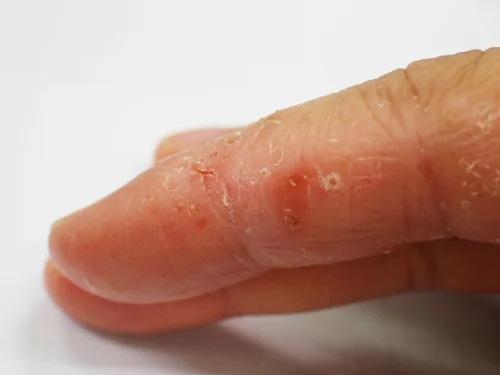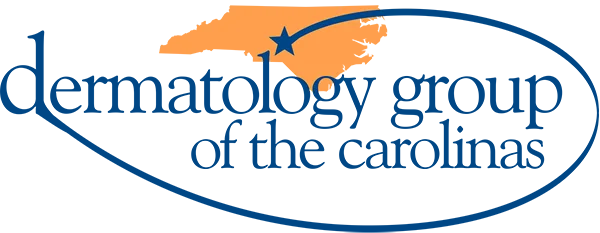
Dyshidrotic Eczema
Overview:
Dyshidrotic eczema is form of eczema found on the hand and feet which causes small blisters that are intensely itchy.
Symptoms:
Small, deep-seated blisters on the edges of fingers, toes, palms and soles; itching, redness, dryness/scaling, and sometimes cracking/fissuring of the skin of the hands and feet.
Causes:
Individuals with underlying eczema, seasonal allergies, or with a family history of dyshidrotic eczema, are at increased risk of developing dyshidrotic eczema. It most commonly presents in adults ages 20-40, and is more common in women than men; however it can develop in anyone, at any age, including childhood.
Everyone has different triggers, and it is important to try to track your own symptoms and patterns to see if you can identify and avoid your own personal triggers. Common triggers include, but are not limited to: pollen, excessive sweating, prolonged contact with water, possible contact with nickel and cobalt, and stress.
Treatment:
Regular use of thick hand moisturizers after every hand wash and shower is the best at
home treatment and prevention of dyshidrotic eczema. Recommended hand moisturizers include CeraVe® Therapeutic Hand Cream, Neutrogena® Norwegian Formula Hand Cream, and Eucerin® Advanced Repair Hand Cream.
Your dermatologist may recommend and prescribe topical steroid creams or other non-steroid
prescription creams/ointments. In some patients, phototherapy (light therapy) can be helpful for
controlling symptoms.
Notable Points:
There is no cure for dyshidrotic eczema, but avoidance of triggers, regular use of moisturizers, and use of prescription medications as recommended by your dermatologist can help to control dyshidrotic eczema.

